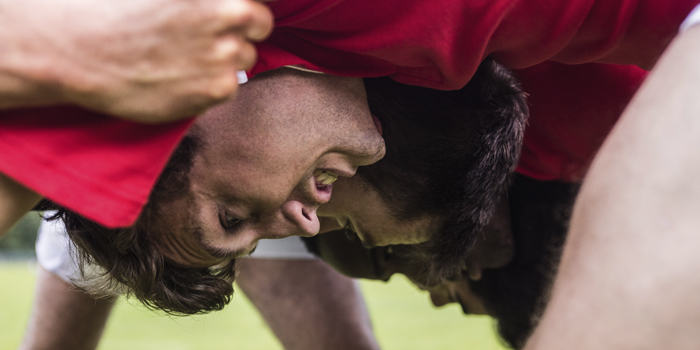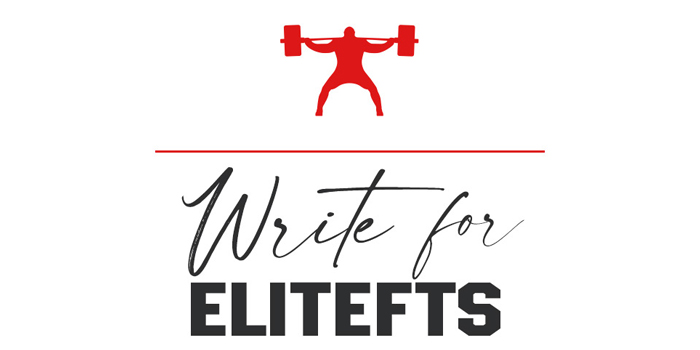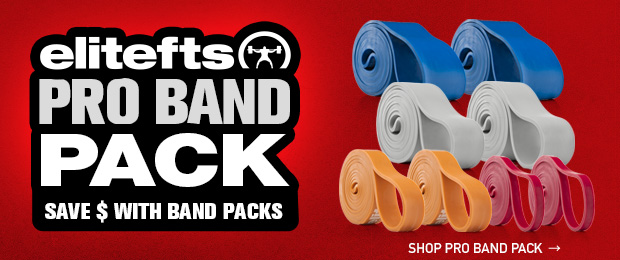
The following programming ideas can be used in several different situations. Initially, I thought of this as a return to training after a break and how to load by increasing the number of training days to ensure you do not go too hard too early. Another aspect of the program could well be a method of maintaining the training stimulus at different times when you are struggling with the Life/Work Balance debate. So when the stresses of work and/or family, study, and the numerous aspects of life, like struggling with your time allocation get too much, you can adjust your training days and still feel that you are getting what you need out of your gym session. Find the time or time will find you.
Let’s begin with a two-day-a-week program. Concentrate on your big load compound movements in this plan. Please see the exercise selection chart at the end of this article. A couple of suggestions: find movements you enjoy doing, and you can use a good load to ensure adequate stimulus. Also, spread your training days out for optimal recovery between sessions. I think a 48-hour break will work perfectly.
Two Days Per Week
| Program (A) | Program (B) |
| Sled Walk | Sled Walk |
| Hinge/Hip Dominant | Knee Dominant |
| Upper Body Push – Vertical | Upper Body Push – Horizontal |
| Upper Body Pull – Vertical | Upper Body Pull – Horizontal |
| Loaded Carry | Loaded Carry |
| CARE | CARE |
If you decide to move to a three-day-a-week program next, I would suggest doing at least a two-week cycle to ensure you hit each specific workout three times in the two weeks. Also, for the second workout of each week, I would substitute a unilateral movement if you did a bilateral movement for the first workout.
Three Days Per Week
| Monday (A) | Wednesday (B) | Friday (A) |
| Hinge/Hip Dominant | Knee Dominant | Hinge/Hip Dominant |
| Upper Body Push - Vertical | Upper Body Push - Horizontal | Upper Body Push - Vertical |
| Upper Body Pull - Vertical | Upper Body Pull - Horizontal | Upper Body Pull - Vertical |
| CARE | CARE | CARE |
| Monday (B) | Wednesday (A) | Friday (B) |
| Knee Dominant | Hinge/Hip Dominant | Knee Dominant |
| Upper Body Push - Horizontal | Upper Body Push - Vertical | Upper Body Push - Horizontal |
| Upper Body Pull - Horizontal | Upper Body Pull - Vertical | Upper Body Pull - Horizontal |
| CARE | CARE | CARE |
Another version of this three-day program, if you want to combine strength and size, is to add a unilateral movement in the same plan after you have done the sets of the initial bilateral movement. Here is a list of possible options for you to consider if you wish to try this method of training.
Three Days Per Week - Second Option
| Movements/Type | Bilateral | Unilateral |
| Hinge/Hip Dominant | Trap Bar Deadlift | Landmine RDL |
| Knee Dominant | Safety Bar Box Squat | Rear Foot Elevated Split Squat |
| Upper Body Push - Horizontal | Swiss Bar Bench Press | One Arm DB Bench Press |
| Upper Body Push - Vertical | Military Press | One Arm KB Savickas Press |
| Upper Body Pull - Horizontal | Pendlay Row | One Arm Seated Row |
| Upper Body Pull - Vertical | Chin Ups | One Arm Pulldown |
The final progression in this plan is to move to a four-day-a-week split-style training plan. I prefer the three days a week to aid recovery, but I know quite a few people prefer to train in a four-day-a-week split style. I have chosen a standard lower body/upper body split, but you could certainly do an anterior/posterior split.
Four Days Per Week
| Monday | Tuesday | Thursday | Friday |
| Hinge/Hip Dominant Bilateral | UB Push Horizontal Bilateral | Knee Dominant Bilateral | UB Push Vertical Bilateral |
| Knee Dominant s/s Hinge/Hip Dominant Unilateral | UB Pull Horizontal Bilateral | Knee Dominant s/s Hinge/Hip Dominant Unilateral | UB Pull Vertical Bilateral |
| Hamstring specific | UB Push s/s Pull Vertical Unilateral | Hamstring specific | UB Push s/s Pull Horizontal Unilateral |
| LB CARE | UB CARE | LB CARE | UB CARE |
Progression Program
Regarding sets and reps, I have provided a very basic progression below. My preference is to train bilateral movements for strength and then train unilateral movements for size. My only caveats in this area are:
Bilateral – strength-based, reps in the 2 – 6 range, sets in the 3 – 8 range
Programming – clusters, wave loading, ramp loading, straight sets.
Unilateral – hypertrophy based, reps in the 6 – 20 range, sets in the 1 – 4 range.
Ensure that the unilateral movement is in the same plane as the bilateral movement.
Sets And Reps
| Weeks/Movements | Bilateral | Unilateral |
| 1 | 4 x 6 | 12, 10, 8 |
| 2 | 2 x 5, 2 x 3 | 3 x 8 |
| 3 | 3 x 1/6 Contrast | 10, 8, 6 |
| 4 | 2 x (5, 3,1) wave | 3 x 6 |
Bilateral Rest Periods: 2’’ - 3’/Unilateral Rest Periods: 30” – 1’
To conclude this article, I would like to address the importance of the CARE movements. CARE is my acronym for Core Accessories Rehab Exercises. I have programmed primarily in sports, but I think that the CARE approach is equally justified in the training of everyone, especially with an older population. For me, this would be age-proofing the elderly.
“Strength training is the overcoming of weaknesses.” —Louie Simmons
“Do your prehab for less rehab,” —Louie Simmons
“The best ability is availability.” —Bryan Mann
Over the years, I have come to believe that there are two specific types of weight training programs. Firstly, performance-based strength and power programming for sports performance. Secondly, a prehab style of program for the smaller muscles that you can not see. If they are not on the same page, you will be watching from the sidelines at some stage.
CARE Program
I believe that the prehab style programs that I have come to call my CARE program actually form the performance program in some sports where the emphasis on strength and power is nowhere near as high as other sports and also as a way of creating buy-in with players who are not as enamored with the weight room as others maybe.
Two specific players come to mind, both former All Blacks. One told me that after his first year in professional rugby, he was never 100 percent ever again, but if he could get to at least 80 percent each week, he knew he was good enough to play. The second just did not like the weight room at all, so after reading Bud Jeffries's Twisted Conditioning and Matt Furey’s Combat Conditioning, we devised a program of body weight movements that he took to, and he actually enjoyed his training as well as building some resilience and robustness.
Each person you design a CARE program for will have specific needs from the sport they play, their position in that sport, and their injury history. This is also a great opportunity to get together with the medical staff and to talk through with the player the WHY of program development, building compliance and trust.
I have also expanded my CARE program to include unilateral movements, more specific prehab movements, accessory exercises, stretching, mobility, yoga, and pilates. Every program will be different. Also, the sets and reps structure will vary, allowing true individualization.
Header image credit: wavebreakmediamicro @ 123rf.com
Bio
Ashley Jones has worked in three professional sports across 30 years and four continents. He was awarded the NSCA's Professional Coach of the Year in 2016. Ashley holds his CSCS (Certified Strength and Conditioning Specialist) since 1988 and is an honorary lecturer in the School of Therapeutic Sciences, University of Witwatersrand, Johannesburg, SA.











6 Comments